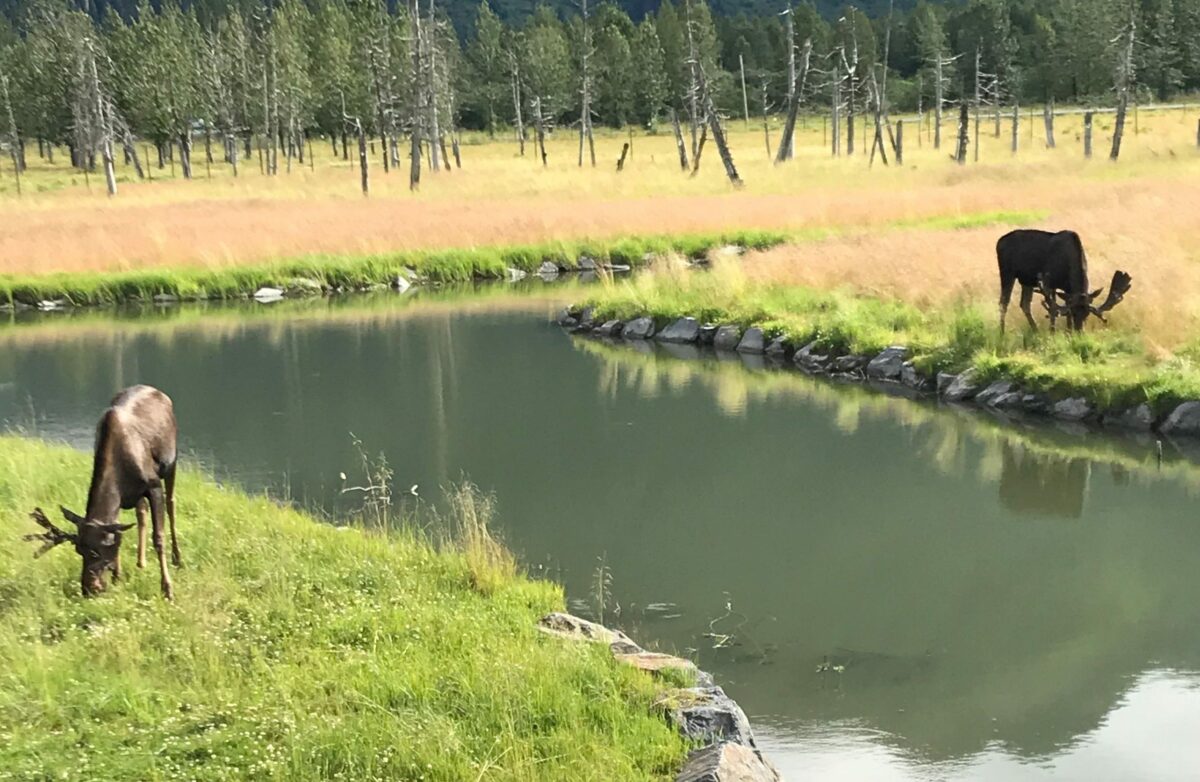The Iditarod is a sport unlike any other. That much is clear from the dog sleds alone. But it’s also obvious with a simple perusal of the famous race’s official rule book.
Rule 34 states that any “edible big game animal” that is killed in defense of life or property must be properly gutted and dressed before a musher, or any musher behind them, can continue with the marathon dog sled race. This isn’t a bylaw that comes up often; but when a massive, angry moose threatened participants on day one of the 2024 event, it took center stage.
The territorial beast was first encountered by Jesse Holmes in the run-up to the Finger Lakes checkpoint. He relayed the totally normal, for Alaska anyway, experience of punching a moose in the face.
Screenshot from @DallasSeavey's FB page: pic.twitter.com/ohd6eM0xDb
— MJ (@MeganJBradley) March 4, 2024
Dallas Seavey, the next musher up on the course, ran afoul of the animal once more and, once it threatened his dogs, dispatched the moose with his rifle. A third musher coming up behind them then “bounced over” the carcass later in the race.
From Wally too pic.twitter.com/CEouIZl6M2
— Comfort Cripes (@AntiGrinch) March 4, 2024
Since Seavey killed the animal, he was also responsible for gutting it in order to preserve as much meat as possible. Here’s the official Iditarod release regarding the incident.
Race Officials were notified at 1:43 a.m. that Veteran Musher Dallas Seavey (bib #7) was forced to dispatch a moose in self defense after the moose became entangled with the dogs and the musher on the trail. Seavey and his team were 14 miles outside of the Skwentna checkpoint on their way to the Finger Lake checkpoint.
Seavey continued on the trail, stopped to rest and feed his dogs and pulled into the Finger Lake checkpoint at 8:00 a.m. AKST. The Alaska State Troopers were immediately notified by Race Marshal Warren Palfrey. Seavey dropped one dog at the Finger Lake checkpoint who was injured during the moose encounter. The dog was immediately flown from Finger Lake to Anchorage and is currently being evaluated by veterinarians in Anchorage.
With help from snowmobile-aided support in the area, we are making sure that every attempt is made to utilize and salvage the moose meat. I will continue to gather information in this incident as it pertains to Rule 34,” says Race Marshal Warren Palfrey.
The dog injured in the incident was airlifted for veterinary care in Anchorage. Seavey, while bothered, continued on with his race per his team on Twitter:
**NOTE Dallas and Team are all Safe…Dallas Tracker Update! The Moose attacked Dallas's team and he had to take action! Full story on Instagram and FB. Currently back on the trail passed Rainy Pass! This race is off to an unexpected start! #iditarod2024 #teamdallas #sleddogs pic.twitter.com/KzwkLkiOva
— Dallas Seavey (@DallasSeavey) March 4, 2024
Thus began the 2024 Iditarod, a race renowned for a level of difficulty that goes above and beyond surviving the frosty Alaskan climate. But if it’s decided an animal is a legitimate threat, well, at least the mushers can get some moose sticks out of it.


